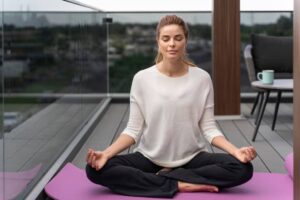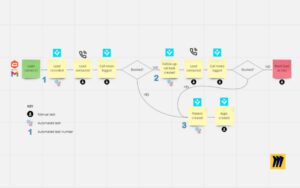The Personal Development Blog
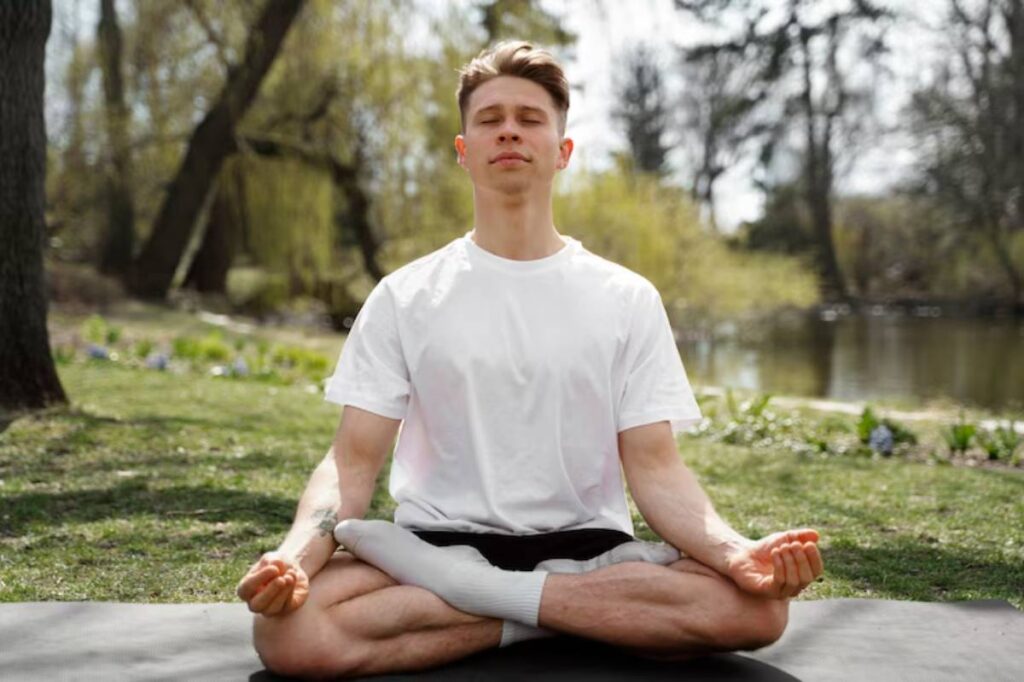
How to Master Mindfulness in the First 10 Minutes of Your Day
How you start your morning matters more than you think. Before emails, notifications, and pressure begin, you have a window — one that can shape your mindset for the entire day.
Mastering mindfulness in the first 10 minutes doesn’t require silence, incense, or hours of meditation. It takes intention, structure, and a few focused breaths.
This guide will walk you through a simple yet powerful mindfulness morning guide, an easy meditation startup routine, and proven practices for stress-free mornings that give you clarity before the chaos.
Pro Tip: Mindfulness isn’t about emptying your mind — it’s about noticing what’s already there.
Quick Guide: 10-Minute Mindfulness Morning Routine
- Sit or lie down in a quiet space.
- Focus on your breath or body sensations.
- Acknowledge thoughts without judgment.
- Use gentle prompts or affirmations.
- Set an intention for the day.
- Bring awareness into your first few tasks.
Important: You don’t need to meditate for hours. Ten mindful minutes, done consistently, changes everything.
Step-by-Step: Build Your Mindful Morning in 10 Minutes
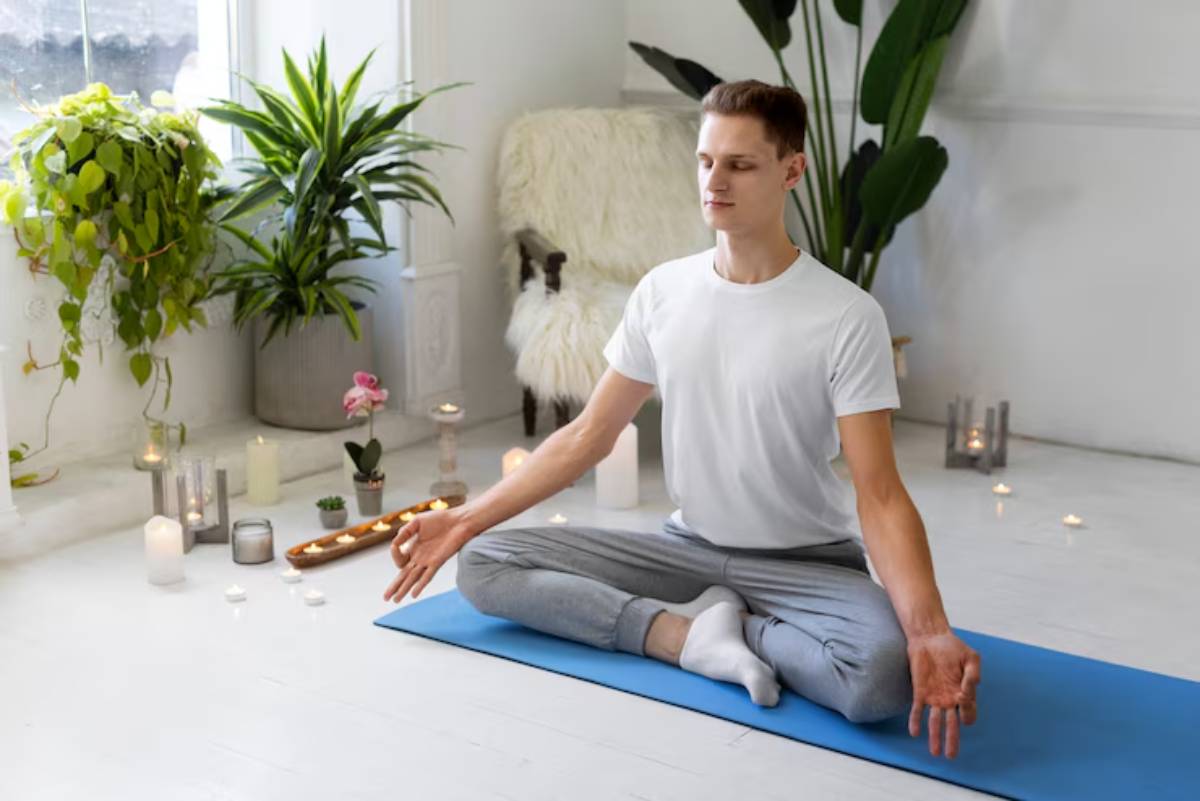
Step 1: Create a Calm Space
Start by preparing your environment — even if it’s just a corner of your bedroom.
Set up for success:
- Sit on a chair, cushion, or the floor.
- Minimise noise (or use soft background sound).
- Avoid distractions — leave your phone on aeroplane mode.
- Use dim lighting or natural light if possible.
| Environment Element | Benefit |
| Quiet space | Reduces external stimulation. |
| Natural light | Signals your body to wake calmly. |
| Comfortable seat | Encourages relaxation, not sleep. |
Quick Tip: Your environment doesn’t have to be perfect. The routine matters more than the room.
Step 2: Focus on Your Breath
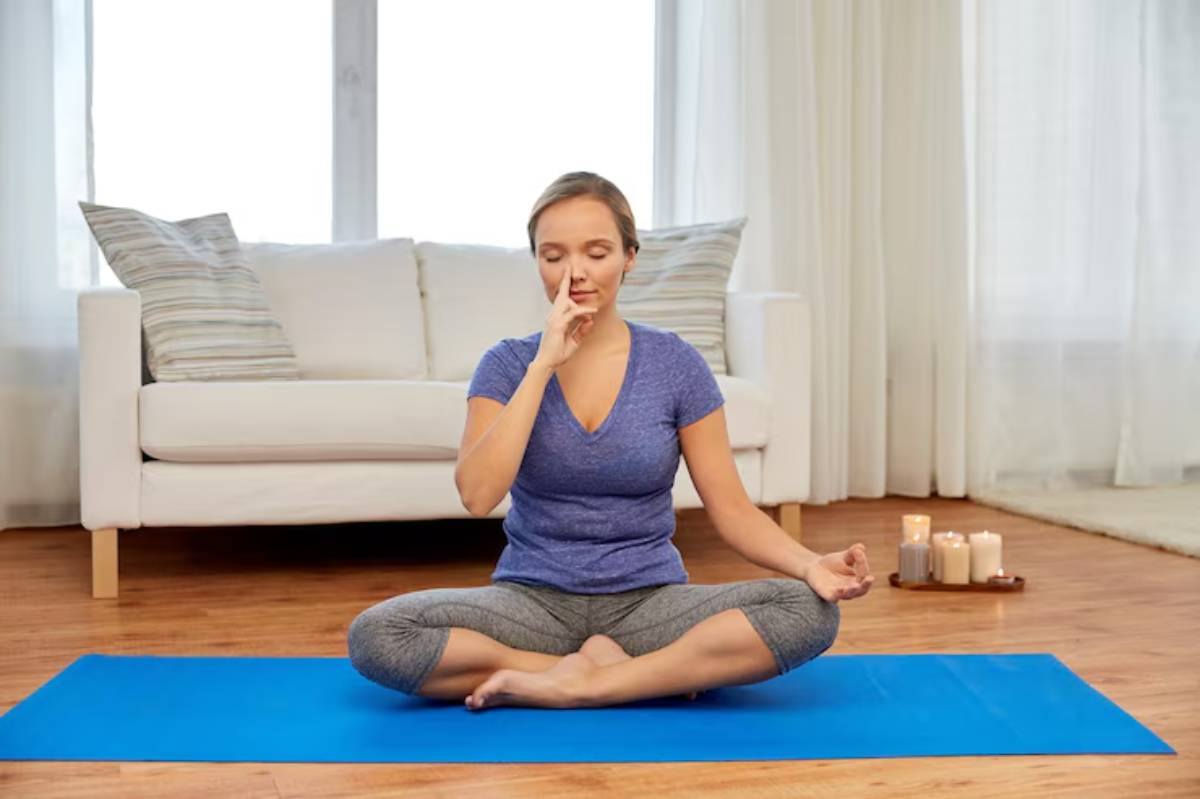
Your breath is your built-in mindfulness anchor. It brings you out of your head and into your body.
How to begin:
- Inhale deeply through your nose (4 seconds).
- Hold briefly (1–2 seconds).
- Exhale slowly through your mouth (5–6 seconds).
- Repeat 5–10 cycles with awareness.
| Breath Pattern | Purpose |
| 4-2-6 | Calms nervous system. |
| Box breathing (4-4-4-4) | Centres and focuses. |
Pro Tip: Don’t force slow breathing — let your body guide your rhythm.
Step 3: Practice Simple Awareness
Let your attention move gently to what you feel, hear, or notice — without judgment.
Body awareness exercise:
- Scan from head to toe.
- Notice tension, tingling, or areas of ease.
- Breathe into tense areas and let them soften.
Mindfulness tip:
- If thoughts arise, gently label them (“planning,” “worrying”) and return to breath.
Sustainability Note: Awareness isn’t about fixing — it’s about noticing.
Step 4: Add a Mindful Prompt or Affirmation
Gentle prompts train your brain to focus on what matters most.
Useful prompts:
- “What do I need today?”
- “How do I want to feel as I move through this day?”
- “What can I let go of right now?”
Affirmations to try:
| Statement | Effect |
| “I begin this day with calm and strength.” | Encourages presence. |
| “I give myself permission to slow down.” | Reduces pressure. |
| “I am grounded, focused, and ready.” | Builds confidence. |
Quick Tip: Speak affirmations silently or aloud — both are powerful.
Step 5: Set a Morning Intention
End your mindfulness session with a clear, simple intention. It gives your day a direction — and your actions a compass.
Examples of mindful intentions:
- “Today, I will listen more than I speak.”
- “I’ll return to my breath when I feel rushed.”
- “I will be kind to myself, especially when things go wrong.”
Why this matters:
- Intentions anchor your values in action.
- They influence how you handle challenges.
Pro Tip: Write your intention down — seeing it reinforces it.
Mindful Movement Option (5 Minutes)
If sitting still doesn’t suit you, mindful movement is equally powerful.
Try this 5-minute flow:
- 1 min: Standing forward fold (relaxes spine).
- 1 min: Cat–cow stretch (eases back tension).
- 1 min: Seated twist (wakes up spine and digestion).
- 2 min: Gentle standing or seated breathwork.
| Movement | Benefit |
| Stretching | Releases tension stored during sleep. |
| Movement with breath | Increases focus and calm. |
Quick Tip: Even one stretch with awareness is better than none.
Tools and Apps to Support Your Routine
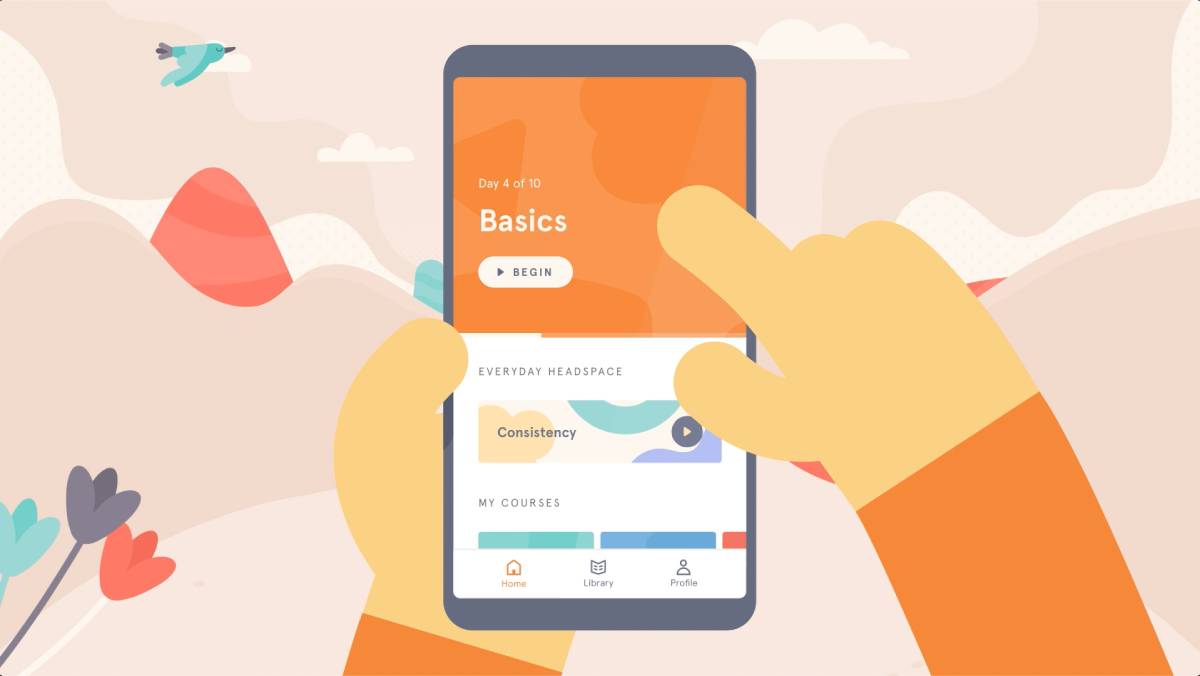
| App | Feature |
| Headspace | Guided 5–10 min meditations. |
| Insight Timer | Free sessions with mindfulness teachers. |
| Calm | Morning affirmations and daily check-ins. |
| Tide | Combines music, nature, and mindfulness. |
Sustainability Tip: Digital tools help, but they’re optional — your breath is always enough.
Common Mistakes and How to Avoid Them
| Mistake | Fix |
| Expecting silence | Accept mental chatter as part of the process. |
| Trying to “clear your mind” | Focus on noticing, not emptying. |
| Skipping when short on time | Even 1–2 minutes builds consistency. |
| Judging your session | There’s no “perfect” mindfulness — only practice. |
Pro Tip: Progress isn’t how calm you feel — it’s how often you return to the moment.
Frequently Asked Questions
Is 10 minutes of mindfulness really enough?
Yes. Regular short sessions are more impactful than long, irregular ones. Start with 2–5 minutes if needed — build from there.
What if I keep getting distracted?
That’s normal. Distraction is part of the practice. The moment you notice it and return — that’s mindfulness.
Can I do this routine lying down?
Yes, especially if you’re doing a body scan. But if you tend to fall back asleep, sit upright.
Do I need to meditate at the same time every day?
Consistency helps — but even flexible routines work. Morning mindfulness is powerful, but any time you show up is valuable.
Should I journal after mindfulness?
It’s optional but helpful. A few lines about what you noticed or your intention for the day can reinforce your clarity.
Own the First 10 Minutes and the Rest Will Follow
You don’t need to meditate on a mountain to feel calm, centred, and focused. Just ten quiet minutes in the morning — with your breath, body, and awareness — can shift how you respond to everything else.
By following this simple mindfulness morning guide, using a short meditation startup routine, and consistently building towards stress-free mornings, you take control of your day — not the other way around.
Be present. Begin calmly. Lead with clarity.




